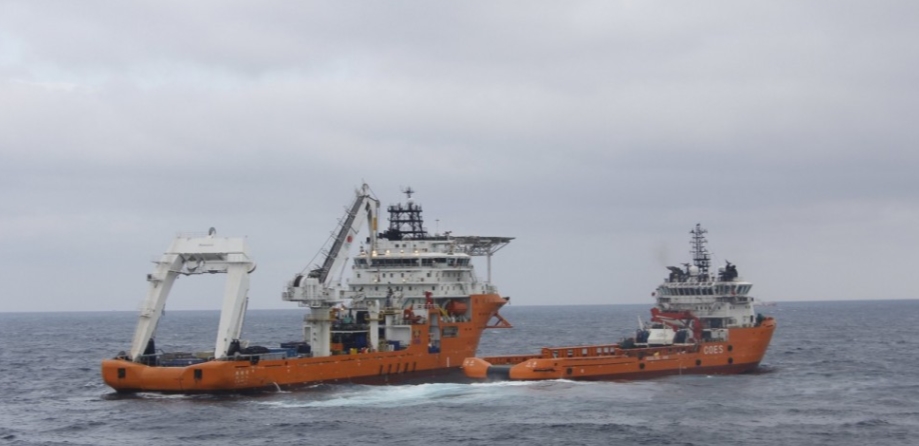Maritime official says retrieving vessel is best solution to contain environmental damage but it could cause another explosion

China has begun an investigation into the Sanchi oil tanker collision and authorities are looking into the feasibility of salvaging the wrecked ship in a bid to minimise contamination from the spill.
But a maritime official on Friday warned that retrieving the wreckage from a depth of 115 metres at the bottom of the East China Sea – where the Iranian tanker exploded and sank – could cause another explosion.
“The best solution is to organise salvaging of the sunken ship,” Zhi Guanglu, deputy director of the China Maritime Search and Rescue Centre, told reporters. “But the vessel is huge and it could turn out to be an extremely daunting task.”
That task would not begin until rescuers had worked out a clear, viable and safe plan to do so, according to Gong Yongjun, a maritime operations specialist at Dalian Maritime University.
Zhi said maritime authorities would also consult the ship owner, National Iranian Tanker, about the salvage plan.

As well as the cargo of crude oil, the toxic bunker fuel that powered the ship’s engines is also a pollution concern – the heavy oil is much more hazardous than condensate and difficult to remove from the water. Xiao Yingjie, president of the Merchant Marine College at Shanghai Maritime University, estimated there was about 1,000 tonnes of bunker fuel still trapped in the tanker.
China’s State Oceanic Administration said on Thursday that several previously unreported oil slicks had been seen by planes, ships and satellites, one of them 2.5km east of the sunken tanker, that could indicate leakage of the bunker fuel.
The oil spill is the biggest in decades and Chinese, Japanese and South Korean teams are racing to contain the contamination.
The Shanghai Maritime Search and Rescue Centre sent more than a dozen salvage and clean-up vessels to the disaster site as well as divers and underwater robots to detect leaks.
Zhi said the authorities were checking the Sanchi’s black box, which contains the ship’s sailing data and a voice recorder, to assess who was responsible for the collision. The black box was recovered by Chinese emergency workers on January 13, before the tanker sank.
Xiao said the two vessels’ trajectories before they collided would be analysed to determine what caused the accident.
“It is unclear at this stage what caused the collision, whether it was the result of oversight by crew or improper operations,” Xiao said.
Zhi described the recovery effort as “unprecedented” for Chinese maritime authorities and said they were doing their utmost to minimise the damage.
Gong, from the Dalian university, said the focus for rescuers at the moment was assessing the wrecked ship and detecting leaks. “After a big explosion, it will be hard to staunch the flow of oil in a short period of time,” he said.

